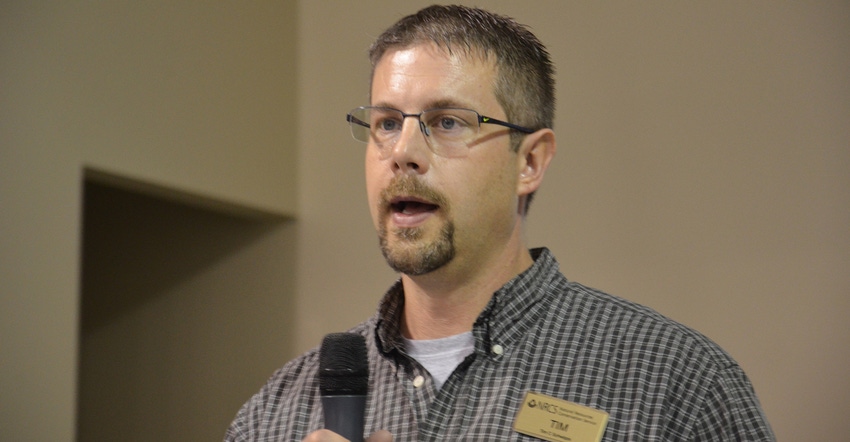
District conservationist Tim Schwipps says there are four good reasons to visit your local Natural Resources Conservation Service and Soil and Water Conservation District office soon. All four reasons relate to possible funds you could apply for that could improve your farming operation.
1. Learn if 319 grant cost-share is available in your area. Schwipps is the NRCS district conservationist in Ripley and Jefferson counties in southeast Indiana. Two watershed programs enabled by Clean Water Act Section 319 grants are underway in the area. These grants are administered by the Indiana Department of Environmental Management, but funds are provided by the Environmental Protection Agency.
Other watershed projects are operating in other parts of Indiana. Schwipps recommends visiting your local offices to see if there is cost-share assistance for trying cover crops or for other practices through these programs in a watershed where you farm.
2. EQIP funding could be available to help protect natural resources on your farm. NRCS’ Environmental Quality Incentives Program can be used for cost-share for various purposes if natural resource concerns are being addressed. At one time, NRCS was emphasizing long-term contracts with multiple projects for EQIP, but there is flexibility to do simpler projects as well today. About 60% of the money allocated for EQIP is mandated to be used on livestock-related projects, Schwipps says. These would include heavy-use areas to help keep cattle in dirt feedlots out of the mud in areas where they congregate.
3. Sign up for continuous CRP. The Conservation Reserve Program consists of two parts: the long-term portion where land is enrolled for at least 10 years and enrollment periods are only offered at certain times, and the continuous CRP, where conservation projects can be applied for one at any time. Grass waterways and filter strips are two examples.
“You can sign up for continuous CRP at any time, but it’s not clear when any new CRP contracts will be approved,” Schwipps says. “We have bumped up against the national cap for CRP acres allowed, set by Congress.”
Some practices that can be done through CRP can likely be done through EQIP, such as grass waterways. One difference is, under EQIP, there are no rental payments for land once the project is installed. There are rental payments for the land in continuous CRP.
4. CSP could help you try innovative crop production practices. Originally called the Conservation Security Program, the farm bill’s Conservation Stewardship Program rewards farmers who are already doing many “green” practices, Schwipps says. “The idea is to encourage someone who is already using cover crops or doing other conservation practices to do more,” he says. The emphasis in this program is more on nutrient management than on physical conservation practices, such as grass waterways, he adds.
One possibility is that you could receive incentives to expand your soil testing and crop scouting program by adding tissue testing, he says. If you haven’t checked to see if you qualify for this program, Schwipps suggests asking about it at your local office.
About the Author(s)
You May Also Like




